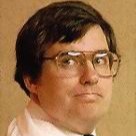
b: 1954
Mark William Hofmann
Summary
Name:
Mark William HofmannNickname:
The Mormon Forger / Mike HansenYears Active:
1985Birth:
December 07, 1954Status:
ImprisonedClass:
MurdererVictims:
2Method:
BombingNationality:
USA
b: 1954
Mark William Hofmann
Summary: Murderer
Name:
Mark William HofmannNickname:
The Mormon Forger / Mike HansenStatus:
ImprisonedVictims:
2Method:
BombingNationality:
USABirth:
December 07, 1954Years Active:
1985Date Convicted:
January 23, 1987bio
Mark William Hofmann was born on December 7, 1954, in Salt Lake City, Utah. Raised in a devout Latter-day Saint (LDS) family, Hofmann was considered intelligent and curious from an early age. However, his fascination with deception and forgery began in his youth. As a teenager, he managed to forge a rare U.S. coin and successfully fooled numismatic experts.
Despite allegedly losing his faith around age 14, Hofmann conformed to LDS expectations and served a two-year church mission in Bristol, England, beginning in 1973. After returning to Utah, he pursued pre-med studies at Utah State University. In 1979, he married Doralee "Dorie" Olds, with whom he had four children. Their marriage collapsed after his crimes were exposed, and Dorie eventually filed for divorce in 1987.
By the late 1970s and early 1980s, Hofmann had become one of the most skilled forgers in the United States, specializing in historical documents. His primary focus was on documents related to Mormon history, including forged letters supposedly written by church founders like Joseph Smith. The LDS Church authenticated an alleged early LDS document and paid Hofmann over $20,000 in cash and artifacts. One of the most controversial fakes was the so-called "Salamander Letter," which contradicted official LDS teachings and caused major controversy within the church. His reputation among historians and collectors soared, and he dropped out of school to become a full-time dealer of rare books and documents.
murder story
Despite his financial success, Hofmann was drowning in debt by the mid-1980s, due in large part to a lavish lifestyle and an overcommitment to deliver non-existent historical documents. His largest con involved the so-called "McLellin Collection," a set of supposedly explosive documents from early Mormon apostle William E. McLellin, which he promised to deliver to both the LDS and RLDS churches. Hofmann never had the documents and was running out of time to produce them.
As pressure from investors and collectors mounted, Mark Hofmann resorted to murder to silence those who could unravel his fraud. On the morning of October 15, 1985, Hofmann placed a pipe bomb at the Salt Lake City office of Steven Christensen, a rare document dealer and former bishop in the LDS Church. Christensen died instantly when the bomb exploded. Later that day, a second bomb killed Kathy Sheets, the wife of Christensen’s former business partner, at their home.
The next day, on October 16, 1985, a third bomb exploded inside Hofmann’s own car while he was parked downtown. Though he survived, he sustained serious injuries, including damage to his hands. The explosion initially made investigators view Hofmann as a possible third victim.
However, forensic experts soon uncovered inconsistencies in his stories and traced the bomb materials back to Hofmann himself. The investigation revealed his forgery empire and the mountain of lies he had built over the years.
Faced with 27 charges, including murder, bomb construction, theft by deception, and fraud, Hofmann was indicted in January 1986. The case never went to trial. In January 1987, he accepted a plea deal and pleaded guilty to two counts of second-degree murder, theft by deception, and fraud. The plea deal spared him the death penalty, but the judge recommended he never be released. During a parole board hearing in 1988, Hofmann chillingly confessed that the killing of Kathy Sheets was “almost a game” and revealed his nihilistic worldview: "I think life is basically worthless."
In prison, Hofmann attempted suicide by overdosing on antidepressants. He survived, but the act left his forging hand permanently disabled due to nerve damage caused by lying unconscious on it for over 12 hours. He was excommunicated by the LDS Church and eventually transferred to the Central Utah Correctional Facility in Gunnison. He was sentenced to life in prison and remains incarcerated in Utah.